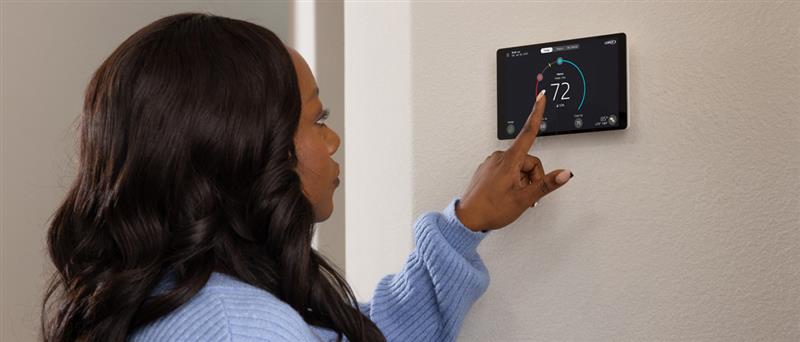Your thermostat is one of the most familiar and important components in your HVAC system, playing a key role in managing your home’s comfort and energy use year-round. But many homeowners run into confusion when they see the “Hold” button on their thermostat. What does it actually do? And when should you use it?
Understanding this feature can help you avoid unwanted temperature swings, reduce energy waste, and make your system work better for your lifestyle.
What the “Hold” Button Really Does?
The Hold function is designed to keep your thermostat at one set temperature until you decide otherwise. Normally, a programmable or smart thermostat follows a schedule—warming up in the morning, dialing back while you’re away, and adjusting again in the evening.
When you press the “Hold” button, you’re telling the thermostat to pause that schedule. It will ignore all future automatic changes and stay fixed at the temperature you’ve selected. Think of it as a “pause button” for your heating and cooling program.
There are typically two types of holds:
- Temporary Hold: Keeps your chosen temperature until the next scheduled change.
- Permanent Hold: Locks in your chosen temperature until you manually cancel it or press Run to return to the schedule.
Why Use Hold Instead of the Normal Schedule?
Schedules are great for day-to-day consistency, but life doesn’t always fit into a routine. The Hold function helps in situations like:
- Hosting guests: If you’re entertaining, you may want your home slightly cooler or warmer than usual for comfort.
- Vacation time: A permanent hold lets you set an energy-saving temperature while you’re away, without reprogramming your thermostat.
- Extreme weather: During heat waves or cold snaps, a hold can help keep the temperature steady without fluctuations.
- Irregular schedules: For those who work odd hours, a hold prevents constant re-adjustments to the programmed times.
By using Hold, you avoid the surprise of your system switching to an unwanted temperature mid-day.
Step-by-Step: Using Hold on Your Thermostat
Using Hold is straightforward:
- Adjust the temperature to your desired setting.
- Press the “Hold” button (sometimes labeled “Permanent Hold” or “Hold Until”).
- For temporary holds, confirm the end time if prompted.
- To cancel, press “Run” or “Cancel Hold” to resume your schedule.
If your thermostat doesn’t respond as expected, check the user manual or reach out to an HVAC professional for guidance.
Comfort, Energy, and Balance
Some homeowners wonder if leaving their thermostat on hold all the time is best. While it certainly ensures stable indoor temperatures, it isn’t always the most efficient choice.
Your thermostat’s programmed schedule is designed to save energy by reducing heating or cooling when you don’t need it—like while you’re asleep or away. Using Hold long-term can eliminate those savings, leading to higher utility bills.
That’s why experts recommend using Hold only for temporary or unusual circumstances and then returning to Run so the schedule can do its job. Think of it as a tool for flexibility, not a permanent setting.
How Long Does Hold Last?
With a Temporary Hold, your thermostat will keep the set temperature only until the next programmed period begins (such as “Wake,” “Sleep,” or “Away”). Permanent Hold, however, lasts indefinitely—hours, days, or even weeks—until you cancel it.
If your screen says “Hold,” you can return to normal scheduling by pressing “Run” or “Cancel Hold.” From there, your thermostat resumes its programmed changes automatically.
Which Mode Should the Thermostat Be In?
Hold doesn’t change your heating or cooling mode. If it’s summer, you’ll still want the thermostat set to Cool, and in winter, Heat. Hold simply locks in the temperature within that mode.
For example, setting Hold at 72°F while in Cool mode means your AC will keep your home at 72°F until you say otherwise.
When to Ask for Expert Help?
If you often find yourself confused by settings or struggling to balance comfort with energy use, an HVAC professional can help. They can:
- Walk you through your thermostat’s features in plain language.
- Show you how to program an efficient schedule tailored to your household.
- Suggest seasonal adjustments or upgrades, like smart thermostats, that learn your habits and minimize the need for manual holds.
These small tweaks can add up to noticeable savings while keeping your home consistently comfortable.
Using the Hold feature effectively is about knowing when stability matters more than efficiency—and when it’s smarter to let your schedule do the work. A few button presses give you the flexibility to override your thermostat’s plan without permanently changing it, keeping you in control of comfort in every season.

